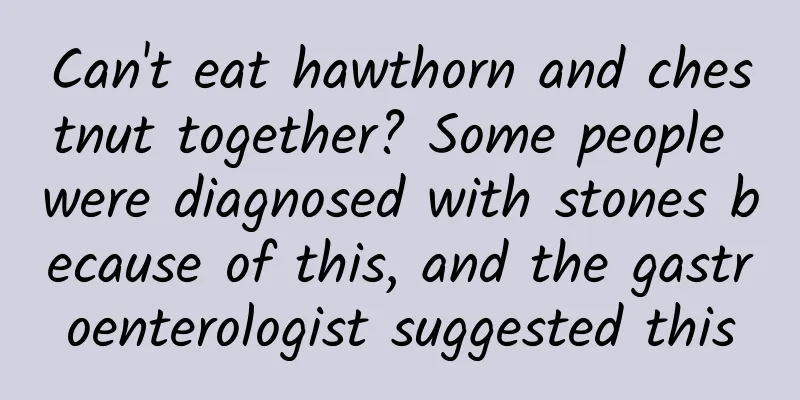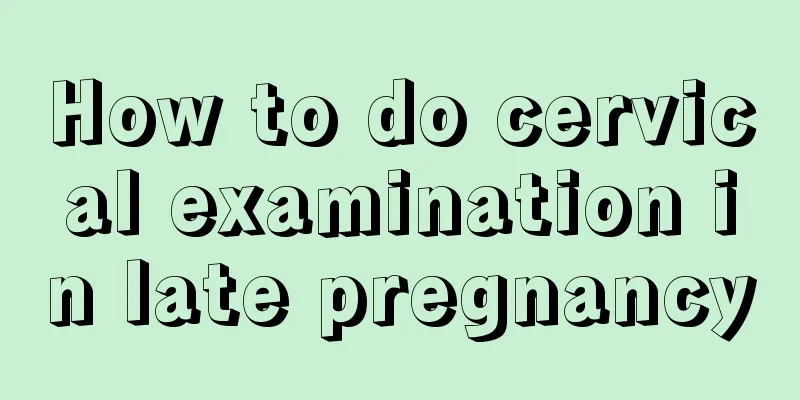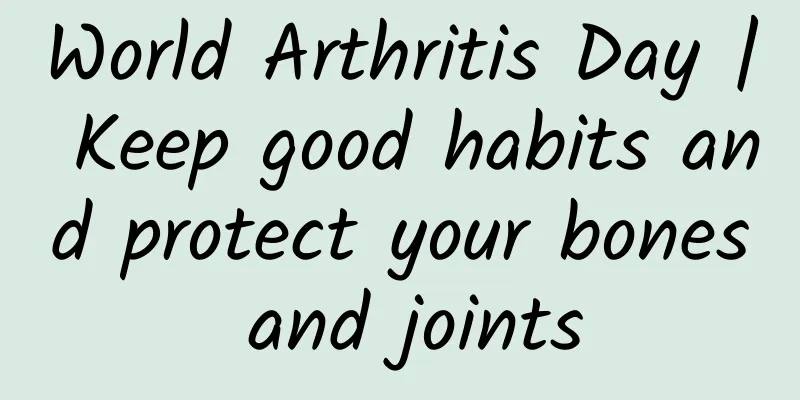Can't eat hawthorn and chestnut together? Some people were diagnosed with stones because of this, and the gastroenterologist suggested this

|
In late autumn in Hangzhou, there are beautiful scenery everywhere. At this time, it is really pleasant to have some freshly baked sweet chestnuts and some sweet and sour hawthorn to relieve the greasiness. But please note that eating chestnuts and hawthorns together may pose health risks. For example, 47-year-old Mr. Zhang (pseudonym) was admitted to the hospital for this reason. "I really can't stand it anymore. How about a colonoscopy?" Faced with Mr. Zhang who made the request as soon as he entered the consulting room, Sun Chuantao, deputy chief physician of the Department of Gastroenterology at the Second Hospital of Zhejiang University of Chinese Medicine (Provincial Xinhua Hospital), was a little curious. After careful questioning, it was learned that Mr. Zhang had been suffering from loss of appetite, abdominal bloating, and nausea for nearly half a month. The abdominal pain had intensified in the past two days, and his stools were all black. This scared him: "Could it be colon cancer..." Afterwards, Dr. Sun Chuantao arranged a gastroscopy and colonoscopy for Mr. Zhang. Upon examination, it was found that Zhang's intestines were healthy, but a 5*8cm stone appeared in her stomach, which was also healthy a year ago. In order to find out how such a large stone came about, Dr. Sun Chuantao took Zhang to carefully review her diet in the past half month, and then found a clue: every autumn, Zhang liked to lie on the rocking chair in the yard and eat chestnuts and candied hawthorns. Two days ago, she even ate half a pound of hawthorns in one go, but she didn't know that this "autumn limited" delicacy was not good enough. Most stomach problems come from eating. Although the cause has been found, how to deal with this huge stone is also a problem. Currently, the conventional treatments for gastric stones are endoscopic treatment, surgical operation and drug litholysis. In Mr. Zhang's case, drug treatment alone is not very effective, while surgical operations are traumatic and expensive, and are mostly suitable for patients with serious complications such as perforation, massive gastrointestinal bleeding, and those who have failed endoscopic treatment. For this reason, Dr. Sun Chuantao recommends endoscopic treatment of gastric stones. However, for gastric stones with a diameter ≥ 4 cm, the choice of endoscopic instruments is limited and lithotripsy is difficult. After repeated consideration, Dr. Sun Chuantao decided to use the lithotripter made by the Department of Gastroenterology of the Provincial Xinhua Hospital under painless gastroscopy. In many years of clinical treatment, this device has the characteristics of being simple, easy to use, short operation time and good patient tolerance. In just 20 minutes, Dr. Sun Chuantao successfully broke Mr. Zhang's huge gastric stone into small pieces. After the operation, he took oral litholytic drugs, and Mr. Zhang's abdominal pain disappeared. During the follow-up examination, there were no stones in his stomach. "Fortunately, I didn't need to use a knife. I will never dare to eat so many hawthorns at once again." Mr. Zhang, who escaped the disaster, still has lingering fears. As the saying goes: pears and dates in August, hawthorns in September, and chestnuts in October. Autumn is the season of harvest, and the incidence of similar events such as "eating too many persimmons will cause kidney stones" and "eating too many hawthorns will cause kidney stones" has also increased significantly. Many people are also curious: Can eating hawthorns and chestnuts together really cause kidney stones? "Hawthorn is rich in tannic acid and pectin, while chestnut is rich in plant protein and dietary fiber. After eating them together, under the action of gastric acid, tannic acid mixes with protein in food to form tannic acid protein precipitate that is not easily soluble in water. Tannic acid protein precipitate is mixed with plant fiber, pectin and other food residues, and it will accumulate like a snowball and eventually form gastric stones." Dr. Sun Chuantao explained. Of course, friends who have already mixed the two foods should not worry too much. Whether stones are formed is largely affected by individual differences and the amount of food consumed, and the tannic acid content of hawthorn will be reduced after the astringency treatment. For healthy people, even if a small amount of tannic acid protein precipitates are produced, they can be excreted from the body with gastrointestinal peristalsis. Gastroenterologists remind that it is not recommended to eat foods rich in tannins such as persimmons, hawthorns, and black dates on an empty stomach, and also not to eat acidic fruits such as oranges and kiwis together with high-protein foods such as chestnuts, crabs, and meat. People with gastritis, gastric ulcers and poor gastrointestinal motility, especially children and the elderly, should try to eat less persimmons and hawthorns, and never mix them together. If you experience abdominal pain, bloating, nausea, vomiting or other discomfort after eating, please seek medical attention as soon as possible. |
Recommend
Xiaomi: Xiaomi smartphone shipments in Japan surged 359% in Q2 2024, making it one of the top three
Recently, Xiaomi Japan X's official account a...
What shampoo should pregnant women use?
For pregnant women, the products they use must be...
Can I get pregnant after clearing the fallopian tube adhesions?
Adhesions in female fallopian tubes are the cause...
What can I drink to hasten my delayed menstruation?
The common cause of delayed menstruation in clini...
What is included in the 12-week prenatal checkup?
Everyone knows that you need to do prenatal check...
Is breast tenderness ten days before menstruation normal?
At present, many women experience breast pain bef...
How to reduce the muscles on women's arms
Many girls who love sports may have this worry. W...
How to treat gynecological tofu dregs itching
Gynecological tofu dregs actually refer to the ap...
Can women eat eggplant after abortion?
We all know that childbirth and abortions are ver...
What are the dangers of vaginal warts
We know that both boys and girls are more likely ...
Maintenance for 50-year-old women
As my country's population ages, the proporti...
The old man next door has gout and dares not eat tofu! Can he eat tofu?
Gout is known as the immortal cancer. It is very ...
Can I practice yoga if I have uterine fibroids?
I believe many friends have a certain understandi...
How to measure bra cup size
In daily life, women are very concerned about the...
Bleeding after hysterectomy
Although the uterus is an important part of the f...









